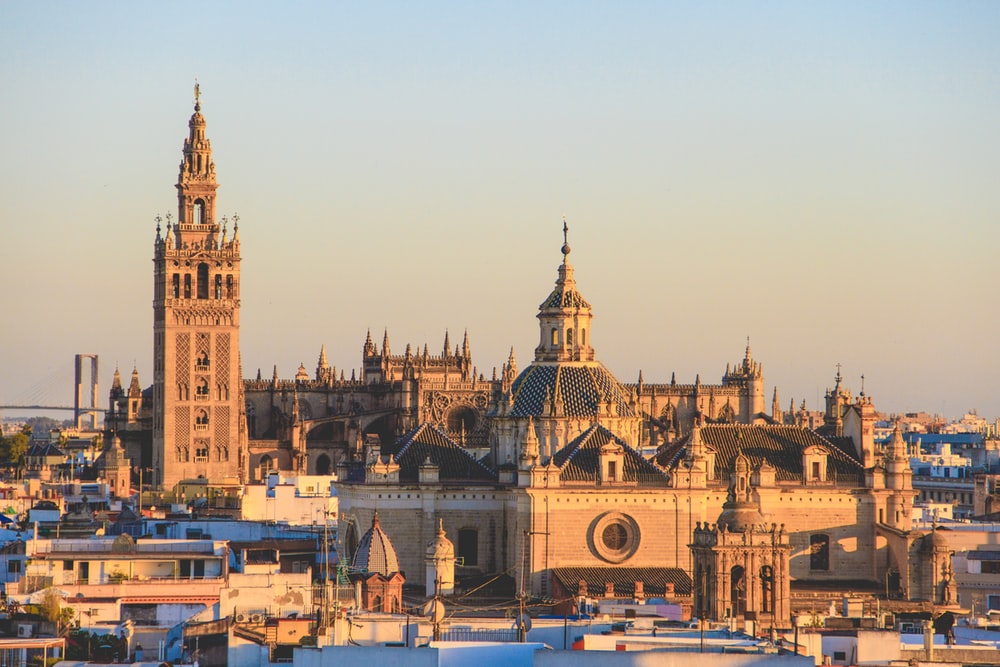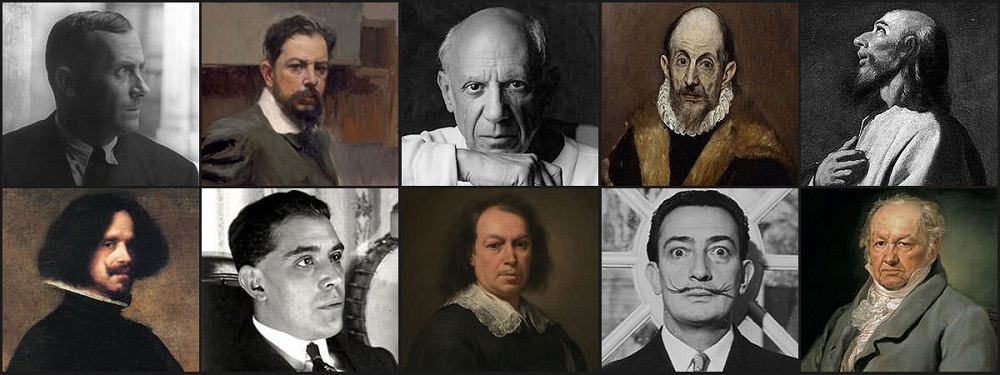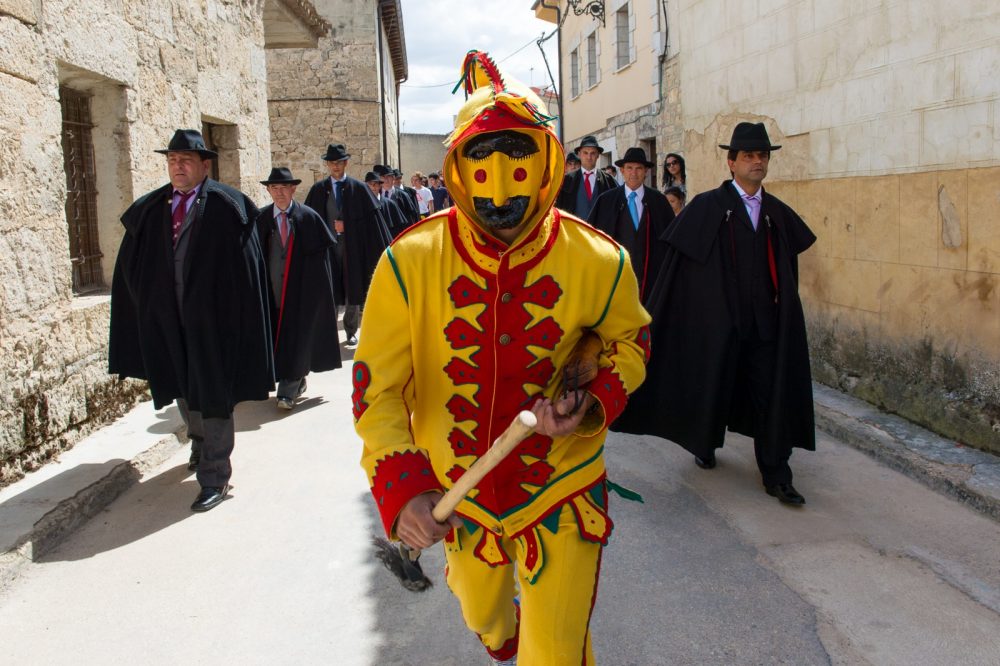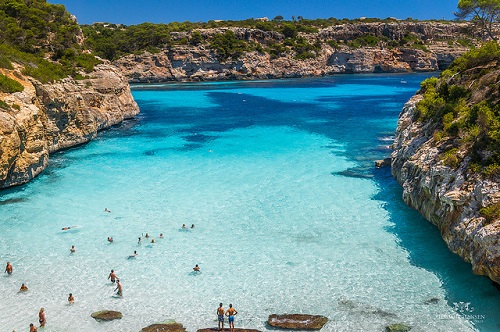Seville is a perfect destination to spend your holidays. Also, it has a rich history and popular for its orange trees, flamenco, especially in spring before the sun becomes extremely hot. Moreover, Seville is well-known by its diverse monuments, wonderful festivals and gorgeous gardens.
1- Alcazar Palace:
 via – tourscanner
via – tourscanner
The Alcazar Palace is certainly one of the most magnificent monuments of Seville.The palace built in the seventh century and it still occasionally hosts the royal family when they visit Seville. In addition, back to the Middle Ages, the palace has been heavily affected by different architectural and cultural styles, extending from Gothic to Baroque.
Furthermore, the palace has many impressive attractions to discover the first one, if you enter the palace from Plaza del Triunfo along the Lion’s Gate, which is easily identified by the ceramic tile work depiction of the great beast, you will pass across different courtyards of stunning charm. Also, the palace is the Patio de Las Doncellas which was the center of public life, this section lets you discover several halls that are definitely worth exploring.
Secondly, the palace has the most beautiful gardens which are divided into separate sectionsand each one has its unique style, the first garden, Jardin Inglés, (English gardens) The Park built in 1909 and these gardens are a copy on those of the British Isles from 18 Centuries. The second garden called Jardin de la Vega Inclan is a gorgeous garden which consists of 20 mostly square flower beds that are separated by paths and fountains; also, these gardens took their inspiration from Islamic culture and the Renaissance.
The last Garden named garden of the Pond identified by a small statue of Mercury, the messenger of the Gods.
Thirdly, the Alcazar palace has also some wonderful parts such as Salon de Los Embajadores, (The Ambassadors Room) is an impressive room which is decorated with gilded cedar wood sculptures, tiles and complex plaster work It shows a beautiful example of the typical horse shoe arches.
El Patio del Yeso, (The Plaster Patio) This attractive garden decorated with beautiful flowers and streams maintains elements of the Almohad architectural style of the Moors from the 12 century.
2- Parque María Luisa:
 via – alcazarseville
via – alcazarseville
Maria Luisa Park is one of the loveliest parks in Europe. was mostly built for exhibition at the 1929 World’s Fair and has remained one of Seville’s most popular sites .it has a spectacular park with half-mile of palms, elms, orange trees and Mediterranean pines, and covers with flower beds and dotted with hidden bowers, ponds, tiled benches, pavilions and fountains.
The most remarkable one of the city’s parks is the Parque de María Luisa located next to the Plaza de España. In this park, you can take a ride on a bicycle, a stroll, or be pulled by horse-drawn carriage along the gardens which is designed by French landscape architect Nicolas Forestier. In addition, you can find also some impressive buildings and museums within the park like The Costurero de la Reina (or the Queen’s Sewing Box) is a 19th-century castle like structure and a former sewing retreat for the wife of Spain’s King Alfonso XII. The Pabellón Mudéjar is home to the Museum of Arts and Traditions of Seville includes collections of antique lace and tiles, and traditional Andalucian craft man ships such as a tannery, silversmithing, ironwork, with recreated workshops and life-size figures.
3- Metropol Parasol:
 via – visiter-seville
via – visiter-seville
Metropol Parasol is the largest wooden structure in the world built between 2005 and 2011.it has dimensions of 150 by 70 meters (490 by 230 ft) and an approximate height of 26 meters (85 ft) .moreover, the Metropol parasol situated at Encarnacion square in Seville‘s old city district; also the building attributes six gigantic umbrella-shaped structures made of birch wood imported from Finland this building is one of Seville’s newest architectural ventures which designed by the German architect named JURGEN MAYERHERMANN, this parasol has an antiquarian, home to a market place, restaurant, an open air plaza and as well as a panorama terrace on the upper level of the parasols.
4- Plaza de España:
 via – alcazarseville
via – alcazarseville
Plaza de España built for Seville’s Ibero-American Exposition at the 1929 World’s Fair, the Plaza provides one of the most impressive panoramas in the city. The 540,000-square-foot Plaza de España has a giant, neo-Moorish building and an expansive mosaic patio with a canal, a fountain and four-foot bridges.
Today, the building accommodates several government offices, so indoor access is off-limits to tourists. But the site’s design is best observed from outside the building. On the Plaza de España grounds, there are sparkling colored ceramic tiles awning nearly the entire plaza, towering marble columns and intricate murals. Besides, the plaza’s has 48 painted benches and each one of them portraits important emblems and themes from one of Spain’s provinces.
Since the Plaza is neighboring to parquet Maria Luisa; plan time to see both sites in the same outing. You can enjoy the plaza for free at any time of day.
5- Golden tower Torre Del Oro:
 via – vanupied
via – vanupied
The golden tower is one of Seville’s noticeable monuments. It dominates the Guadalquivir river banks and it’s probably one of the most photographed sights of the city.
The Torre Del Oro built-in the 13th century during the Taifa kings, a time when Spain was attacked by the moors. its purpose was to protect Seville and prevent the Christians to attack it from the river. Today’s this tower is a naval museum you can discover different things such as nautical charts, models, prints, navigational instruments, ancient and historical documents.
6- Archaeological Museum:
 via – spainisculture
via – spainisculture
This attraction is part of collection built for the Ibero-American Exposition, gathering the most important artifacts from the archaeological sites around the Seville Province. The most impressive finds are from the Bronze Age dating to the 8th century BC is Treasure of El Carombolo.
This treasure belonged to either the local Tartessos Culture that reside on the banks of the Guadalquivir River, or to the Phoenicians. It contains 21 pieces of gold jewelers, and after replicas had been on exhibition for many years.
7- Santa Maria De La Sede Cathedral:
via – reddit
Seville Cathedral is the third largest church and the biggest gothic building in Europe. Also, the cathedral built from 1402 to 1506 by the French master architect of ROUEN CATHEDRAL, its purpose is to prove the city’s power and wealth after the Reconquista.
The constructors of the church, conserved some elements from the old Almohad mosque and divided it into 2 parts the first one is the Moorish entrance court before entering the prayer hall is known today by patio de Los Naranjos comprised a fountain and orange trees. In addition, the second part is the most famous tower is GIRALADA formed by the ancient minaret of the mosque. However, you can go inside the church to discover the longest nave you find a large collection of artworks like paintings of Murillo and Zurbarán, gold-smithery of Juan de Arfe.
8- Feria de Abril:
 via – visitasevilla
via – visitasevilla
Feria de Abril takes place in Southwest of Seville, in Los Remedios, the event lasts five-days, beginning on the Tuesday and wrapping up with fireworks on the Sunday. Furthermore, they built a thousand tents, and inhabitants go around in traditional costume.
The women wear a special dress called the “Traje de Gitano”, typical polka dot flamenco dresses, while many men will wear the short waistcoats and wide-brimmed hats. During the festival people will eat, drink and dance traditional Sevillian until dawn. Early evening there’s fun for kids at the fairground, with horseback rides and classic fair amusements.
9- Semana Santa:
 via – 123rf
via – 123rf
Seville’s Holy Week celebrations are most famous. Each day from Palm Sunday to Easter Sunday, large, life-size Pasos, which are sculptural representations of events from Christ’s Passion, are solemnly held from the city’s churches to the cathedral, accompanied by processions of marching Nazarenos (penitents) through the streets wearing sandals, robes and those slightly eerie pointed hoods.
Everything builds up to Monday and Thursday, when the city’s central plazas put up grandstand seating and women attending even dress in black. This night the parades make their stable way around the center until the morning. The processions, end in the early hours (Madrugada) of Good Friday, are organized by more than 50 different brotherhoods (Hermandades or Cofradías).
10- Giralda Bell Tower:
 via – matteocolombo
via – matteocolombo
The Giralda is a fabulous mixture of the many centuries of Seville’s history. The monument’s convergence of different architectural styles is a reflection of the cultures that have arisen in Seville.
Originally a minaret for the Seville’s primary mosque, the first section of the Giralda was built in the Almohad style in 1356, the four bronze spheres that had crowned the tower fell to the ground and were destroyed. The bell tower is in Renaissance style and was constructed at 16th century.
The original mosque preserved two parts: the Moorish entrance is defined by its ornate fountain, where worshippers would wash their hands and feet before their daily prayers. And the Giralda Bell Tower preserved pieces of various religions give to the overall magnificence of this site. The impressiveness of the Cathedral is furthered by the impact of the Renaissance, where work in the Main Sacristy, the Royal Chapel, and the Chapter House was carried out.
If you are entering from the Cathedral, accessing to the Giralda Bell Tower can be found in the far-right corner. You can climb thirty-four sloping ramps to reach the top of the tower where you will see stunning views across Seville.
11- Plaza de Toros de la Real Maestranza :
 via – trip
via – trip
The Real Maestranza bullring is one of the most impressive plazas in Spain. It constructed on the site of the city’s old rectangular plaza de Toros, in 1881. Particularly magnificent is the Prince’s Gate, the ornate black iron gates which were originally the property of a convent.
The Maestranza’s excellent museum displays the history of bullfighting. During bullfights, there are three matadors, each temptation, two bulls through a series of choreographed movements designed to weaken the animal. In the last of the fights, three stages (tercio de muerte), each matador’s goal is to end the bull’s life.
Bullfights take place in the late afternoon from April to October and can last up to four hours. The bullring’s on-site museum is a worthwhile option for those who prefer to discover the beauty of the ring without watching an actual fight. The bullring itself is very imposing and historical, and the museum will help to make up your mind what you think of the sport.
12- Archivo de Indias:
 via – alcazarseville
via – alcazarseville
Registering the Golden Age of the Spanish Empire that succeeded Christopher Columbus’s exploration of the Americas in 1492 is Seville’s Archive of the Indies.
These UNESCO protected 16th century buildings house some 80 million documents belonging to the Spanish Empire of the 16th, 17th and 18th centuries, a period when Seville was the most important empire. Besides, there are beautiful old books and the imposing buildings themselves, other sights here include a 17th century cannon, maps charting the entire Spanish Empire and several paintings by Goya.
13- Museo de Bellas Artes :
 via – sevillasecreta
via – sevillasecreta
Seville has a rich history that is well displayed in its sites and monuments, one of the most impressive Museum is the Museo de Bellas Artes of Seville and founded in 1835. In the museum, you will find works of art from the Middle Ages, Renaissance, Baroque era and up to the 20th century, mainly Spanish artists such as Francisco de Zurbarán and Bartolomé Esteban Murillo. But also from foreign painters such as Pieter Aertsen, Jan Brueghel l’Ancien, and Cornelis de Vos.



 Top 10 Most Famous Spanish Artists and their Arts
Top 10 Most Famous Spanish Artists and their Arts
 El Colacho, the Baby Jumping Festival in Murcia Spain
El Colacho, the Baby Jumping Festival in Murcia Spain
 Discover The Most Beautiful Places In Mallorca, Spain
Discover The Most Beautiful Places In Mallorca, Spain